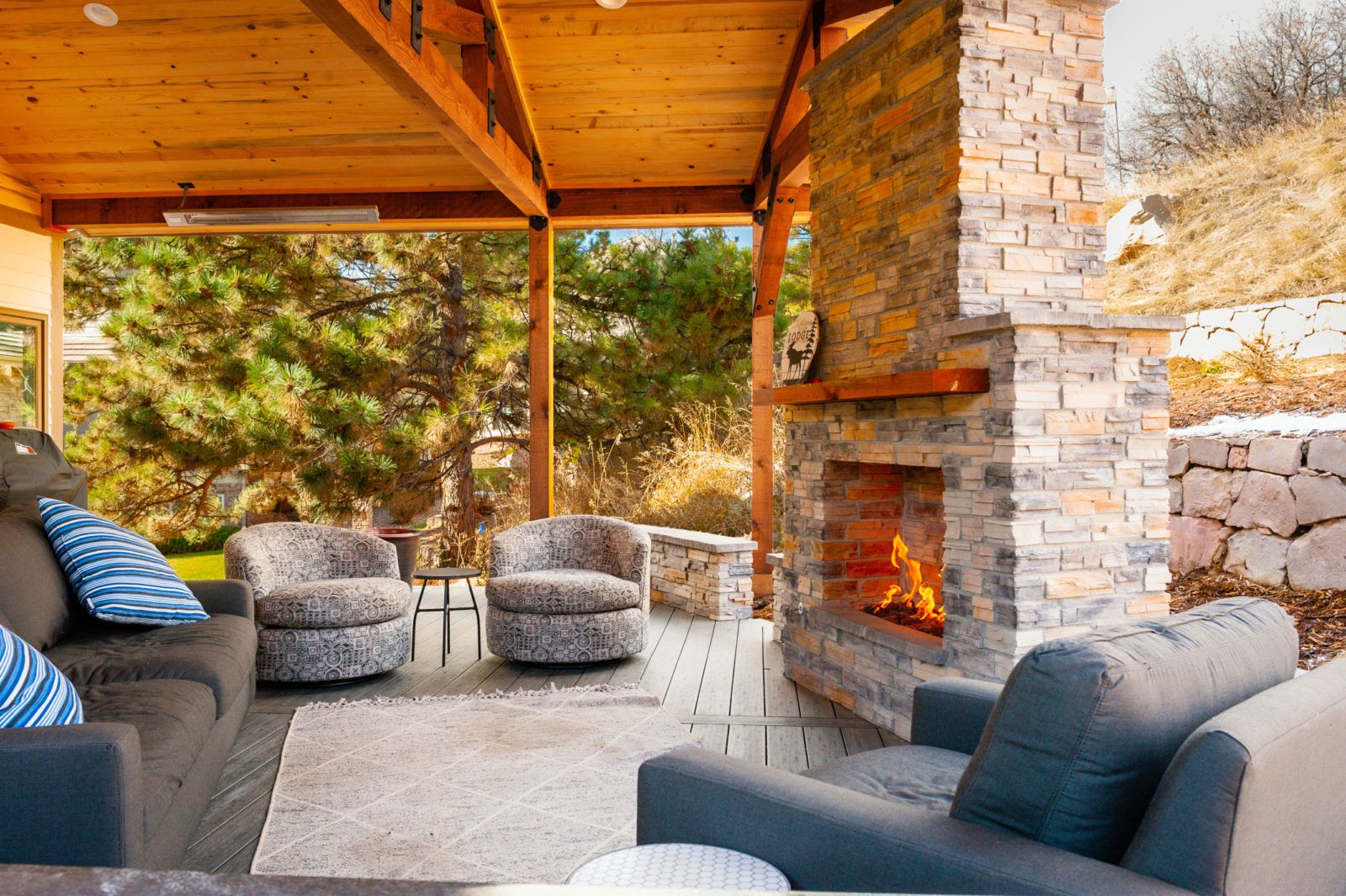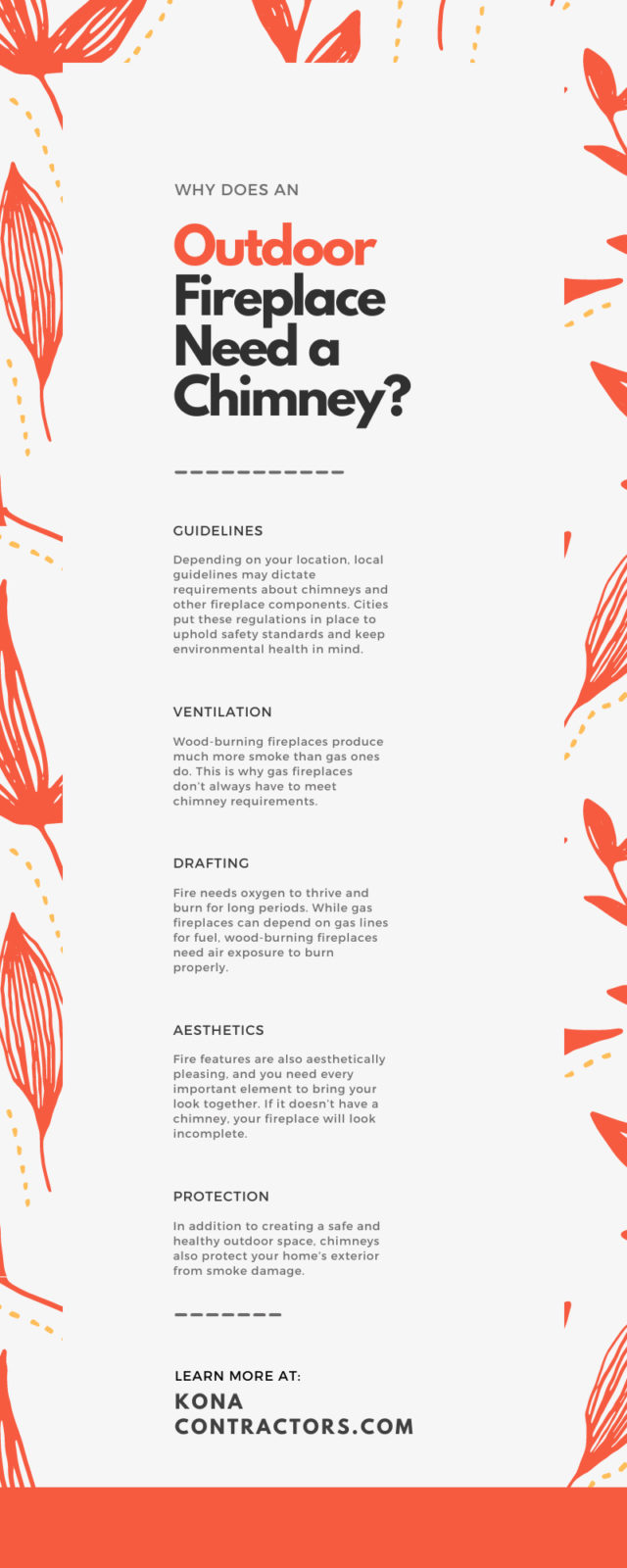
Why Does an Outdoor Fireplace Need a Chimney?
There’s nothing better than spending time outdoors on a beautiful evening in Denver. Having a deck in your backyard gives you a private place to bask in the beautiful weather and make some precious memories. You can dress up your patio even more by installing an outdoor fireplace to keep things warm and cozy.
When it comes to outdoor fireplaces, there are a few components you need to include in your design, such as a chimney. These elements work together to create the most functional features for your backyard patio. Why does an outdoor fireplace need a chimney? Keep reading to learn more.
Does Your Outdoor Fireplace Need a Chimney?
Indoor fireplaces always have chimneys to transfer ash and smoke out of your home. Since your fireplace is outdoors, you might think that adding this feature is unnecessary. However, the truth is that chimneys are essential elements of every fireplace, even the ones you install in your backyard.
There are many reasons why an outdoor fireplace needs a chimney. Some reasons come down to safety, while others have to do with convenience. Either way, understanding the requirements of your deck additions will keep you from accruing fines and making mistakes during the construction process.
Guidelines
Depending on your location, local guidelines may dictate requirements about chimneys and other fireplace components. Cities put these regulations in place to uphold safety standards and keep environmental health in mind. Following these guidelines is crucial to avoiding punishments or having to uninstall your outdoor fireplace.
In Denver, wood-burning fireplaces must have chimneys. They must also exceed the height of surrounding structures by at least two feet to meet city standards. Your local HOA and building authorities will have all the information you need to ensure that your design meets the criteria. However, it’s best to use a knowledgeable contractor who’s aware of all local building codes so that they can do all of the research and heavy lifting for you.
Ventilation
Wood-burning fireplaces produce much more smoke than gas ones do. This is why gas fireplaces don’t always have to meet chimney requirements. However, if your fireplace relies on wood to function, you’ll need a chimney for proper ventilation.
Ventilation is extremely important for your overall health and safety. This is especially true if you install an outdoor fire feature in an enclosed patio. Smoke can damage your lungs and may put your space in danger. Chimneys provide adequate air circulation so that harmful smoke doesn’t cause illness or damage any part of your patio or home’s exterior.
Drafting
Fire needs oxygen to thrive and burn for long periods. While gas fireplaces can depend on gas lines for fuel, wood-burning fireplaces need air exposure to burn properly. Chimneys provide ample room for a draft to enter and keep your fire alive without any intervention from you.
Stoking a fire is tedious, especially if you use your outdoor space to kick back and relax. Chimneys do the hard work for you by circulating oxygen and cultivating your fire. Now, you can enjoy windy days on your deck without worrying about the breeze extinguishing your fire.
Aesthetics
Fireplaces provide light and warmth to your patio space. However, functionality isn’t the only benefit that they offer. Fire features are also aesthetically pleasing, and you need every important element to bring your look together. If it doesn’t have a chimney, your fireplace will look incomplete.
Brick fireplaces look incredible on any backyard deck. Your brick chimney will only enhance these features and add a unique charm that only rustic elements can offer. Fireplaces with chimneys act as an eye-catching focal point for your outdoor space, so you’ll always have an attractive centerpiece to relax and entertain guests around.
Protection
We’ve already talked about how chimneys provide excellent ventilation for your backyard deck. In addition to creating a safe and healthy outdoor space, chimneys also protect your home’s exterior from smoke damage. Ash from unventilated fires can stain your home’s siding and be difficult to remove without professional help. You can avoid this problem entirely by installing a chimney before it becomes an issue.
Stains aren’t the only form of smoke damage that should concern you. Odors from unventilated smoke will linger on your exterior and any upholstered accessories and furniture sitting on your patio. In extreme cases, smoke can cause corrosion, which damages the integrity of your structures. Don’t risk creating a safety hazard; include a chimney in your outdoor fireplace design from the get-go.
Essential Components of Your Outdoor Fireplace
It’s clear that having a chimney on your backyard fire features isn’t just a recommendation; it’s a necessity. However, there’s more to this feature than meets the eye. You’ll need more than just a hollow structure to create safe conditions for ventilation. Here are two essential components your outdoor fireplace will need to meet city standards in Denver.
Flue
The first thing you’ll need to make sure your chimney has is a flue. Chimney flues are essentially additional piping inside the structure that protects materials from smoke, ash, and heat. Contractors can build flues out of various materials but usually use things like metal, ceramic, or clay. This feature lines the inside of your chimney and keeps things from corroding, extending the fireplace’s longevity.
Like chimneys in general, flue requirements depend on your location and local ordinances. In Denver, every outdoor fireplace must have a chimney with a flue to adhere to safety guidelines. Your contractor should know the proper dimension to build a safe and secure structure for your deck.
Chimney Cap
The next thing you’ll need to complete your fireplace is a chimney cap. These features are just as functional as they are aesthetically pleasing. Most importantly, chimney caps keep rain, wildlife, and outdoor debris from falling into your fireplace and creating problems.
Sometimes, flues can exceed the height of your chimney and stick out at the top. Chimney caps cover this excess material and make everything look uniform. Since flues don’t come in traditional fireplace materials, anything poking through will stick out like a sore thumb. Chimney caps solve this problem by hiding anything unsightly and making your fireplace appear cohesive.
Keeping up with regulations regarding your fireplace’s chimney is exhausting. Reach out to Kona Contractors to build your outdoor fireplace in Denver and surrounding locations. We know everything there is to know about fireplaces, fire pits, and chimneys, so you’ll never need to worry about breaking any rules. Contact us today for a quote and get started today!

